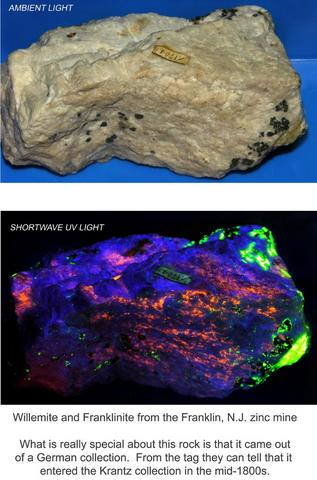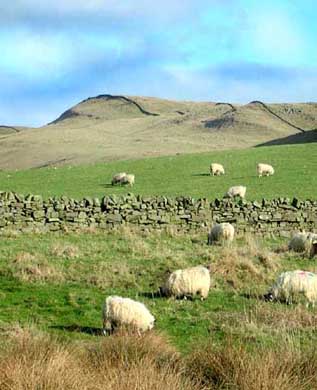-
In the amazing, tall mountains between the city of Chihuahua, Mexico and the Pacific coast called the Sierra Madre Occidental there is the Mexican equivalent of the American Grand Canyon. This is known as Copper Canyon or the Barranca del Cobre. The best way to see it is riding on the Chihuahua al Pacífico railroad. I have taken this train ride a few times, and I highly recommend it.
This vast canyon system consists of six canyons. The overall canyon system is larger than the Grand Canyon of the U.S.A., and portions are deeper than the Grand Canyon.
The Cascada de Basaseachi is up in those mountains. This is a waterfall which falls free standing for 1,023 feet (312 meters). This is the tallest, free standing, permanent year-round waterfall in the North American continent.
I backpacked extensively in the Sierra Madre Occidental mountains and Copper Canyon during the 1970’s with various (mostly female) friends. One time on a narrow, steep mountain trail several days out in the wilderness me and my friend had to pass a male Tarahumara Indian. This young gentleman was wearing a skirt and sandals, and in a scabbard on his belt was carrying a VERY large knife. He did not even speak Spanish, only his native Uto-Aztecan Tarahumara language. The situation of confronting him on this narrow mountain trail with a thin, blonde, big-boobed little hippie chick was a bit unnerving, but it ended up working out just fine. Long (different) story.
Now the violence and mafia killings in Mexico have spread up to this beautiful rural area. I found the following article so shocking that I am repeating it in its entirety:
--------------- Massacre in the Sierra Tarahumara
Gangland-style killings have spread to a new front in Mexico: the tourist town of Creel in Chihuahua's Sierra Tarahumara. In the trademark fashion of drug cartel death squads, masked gunmen with automatic rifles opened fire at a social gathering in Creel on the evening of August 16, killing 13 persons and wounding an undetermined number of others, according to the Chihuahua state attorney general's office (PGJE). An infant was among the dead, the law enforcement agency said.
The motive behind the attack wasn't immediately clear, but the PGJE revealed most of the victims belonged to a single family. One media dispatch reported that return gunfire erupted from the attacked group, possibly resulting in casualties among the aggressors.
Until now, Creel has escaped the narco-violence that's shaken much of the rest of the state in 2008. Situated on the railway to the famed Copper Canyon, Creel is a popular stop-over for backpackers and eco-tourists. The small town is located in a region known for its cultivation of illegal marijuana and opium poppy crops. Home to indigenous Tarahumaras, or Raramuris, the Sierra Tarahumara also hosts clandestine air strips used to transport drugs, including South American cocaine moved from the Pacific Coast.
After hearing the gunshots that disturbed the evening of August 16, workers at Creel's Best Western Hotel warned tourists to stay inside.
The Creel attack could be the latest example of the "Iraqization" of Mexico's narco-war. Massacres, multiple kidnappings, mass graves and gang-installed checkpoints have been registered in Chihuahua and other parts of Mexico throughout the course of the year. On August 11, a woman on her way to work at a maquiladora plant in Nogales, Sonora, was shot to death at checkpoint set up by individuals reportedly disguised as policemen.
With growing frequency, the number of people reported murdered or kidnapped in single incidents is similar to stories emanating from Iraq, Afghanistan and Pakistan. On August 13, assassins gunned down 8 people during an evangelical service at a drug rehabilitation center in Ciudad Juarez, Chihuahua. The border city has borne the brunt of Mexico's 2008 drug violence, with a 42-year-old woman, Cruz Mendoza Pichardo reported as the 800th murder victim in Ciudad Juarez this year. Mendoza was shot to death at her home on Friday, August 15.
Violence in Ciudad Juarez and Chihuahua escalated after the administration of Mexican President Felipe Calderon deployed troops as part of Operation Chihuahua Together last March.
Supported by business, political and social leaders, Chihuahua Governor Jose Reyes Baeza recently requested that the army refocus its mission and go after organized bands of criminals with "precision." The military operation, Governor Reyes contended, has "fallen short."
The PGJE sent investigators to Creel after the weekend's bloody attack. No arrests were immediately announced.
Sources: El Universal/AP, August 17, 2008. La Jornada, August 17, 2008.
Article by Ruben Villalpando. Lapolaka.com, August 17, 2008.
El Diario de Juarez, August 17, 2008. Norte, August 16, 2008.
Article by Arturo Chacon. Cimanoticias, August 14, 2008. Article by Silvia
Nunez Esquer.
Frontera NorteSur (FNS): on-line, U.S.-Mexico border news
Center for Latin American and Border Studies New Mexico State University
Las Cruces, New Mexico
-
-
-
-
-
-
-
-
-
 northern hemisphere low pressure areas always rotate counter-clockwise. Low pressure areas include tornadoes and hurricanes.
northern hemisphere low pressure areas always rotate counter-clockwise. Low pressure areas include tornadoes and hurricanes.




















































